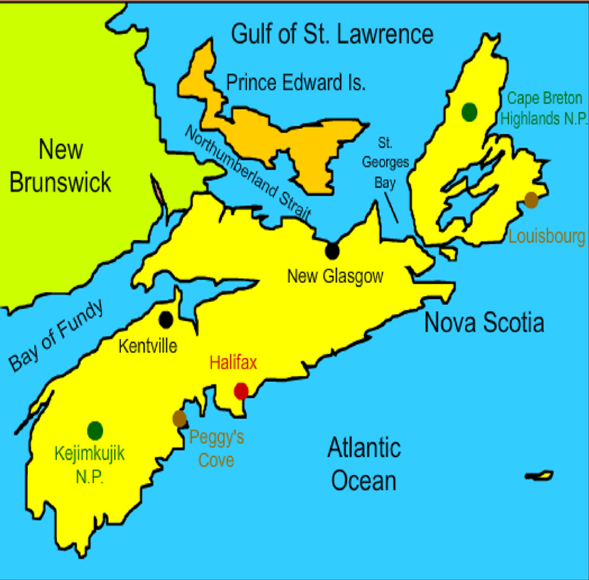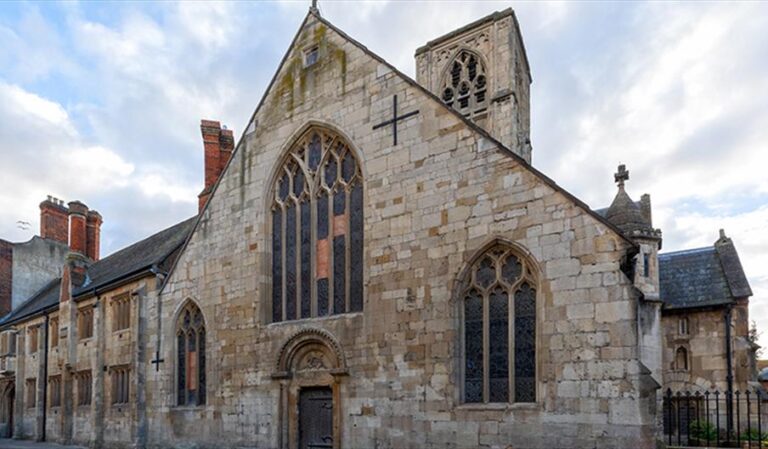| CC4HH
The 28th Regiment of Foot & The West Indian Campaign in The Seven Years’ War
This collaboration between History students at the University of Gloucestershire and the Soldiers of Gloucestershire Museum takes a fresh look at the Regiment’s involvement in the Seven Years War (1756-1763), often described as the first ‘world war.’ It involved an exhibition at the Museum held between November 2023 and March 2024.

Jump to: History of 28th regiment | The Seven Years War | The War in the West Indies | Enslaved Soldiers in the British Army | Free Black Soldiers | The end of the war
As well as considering the regiment’s involvement in the imperial struggle for power and territory between Britain and France, the exhibition also considers lesser-known aspects of the conflict, such as the employment of enslaved and free Black men during and after the conflict. This was inspired by the discovery that formerly enslaved James Albert (Ukawsaw Gronniosaw) served in the Regiment during the War. This exhibition accompanies the digital story on Albert.
History of the 28th Regiment
The regiment was initially established on 5 March 1694, when a warrant was sent to Colonel John Gibson, Lieutenant-Governor of Portsmouth. According to David Scott Daniel’s account of the regiment (1975), the warrant ordered Gibson to raise a regiment consisting of ‘thirteen companys,’ with each company consisting of ‘sixty private soldiers, three sergeants, three corporals, and two drummers.’
Pictured: A grenadier of the 28th Regiment of Foot, 1759. Yellow Lapels, Cuffs and Turnbacks.

The regiment eventually acquired the name ‘28th Regiment of Foot’ in 1742. The regiment was merged with the 61st of foot in 1881 to form the Gloucestershire Regiment. The Gloucestershire Regiment was finally dissolved in 1994.
Campaigns in Canada (1757) and the USA (1775)
Following the outbreak of war between France and Austria in late 1756, William Pitt saw an opportunity to weaken the dominance of the French Empire in Canada. The 28th Regiment was recalled from Ireland and set sail for Louisbourg, Nova Scotia, where they were involved in a six week-long siege against French troops. The 28th also played a key role in the battle of the Plains of Abraham in Quebec on 13 September 1759, during which French troops were forced to retreat into the walls of Quebec. They surrendered five days later.

After its involvement in the Seven Years War and following the outbreak of the American War of Independence, the 28th Regiment sailed to Staten Island, New York. Under the command of General Howe, the 28th engaged in combat against George Washington and his troops in White Plains, 25 miles north of New York. The 28th were also later involved in combat at Brandywine Creek against Washington’s troops. They were garrisoned in Philadelphia until 1778, when they set sail to the West Indies.
The Seven YearS’ War: The First Global War?
The Seven Years’ War (1756-1763) was a huge international conflict fought between major European powers including Great Britain, France, Russia and Prussia. It is sometimes regarded as a continuation of the Austrian War of Succession. France had formed an alliance with Russia and Austria against Prussia, whose only ally was Great Britain.
Pictured: The Battle of Prague between the Prussians and Austrians, 1757; National Army Museum.

With battles fought on three continents, the Seven Years’ War is sometimes described as a world war before such conflicts were quantified as such. In North America, where the war is better known as the French and Indian War, a struggle between Britain and France
began over control of the vast fertile territory along the Ohio River. One of Britain’s aims during the conflict was to use their significant naval power to protect naval transport and trade routes.

The struggle between Britain and France also had outcomes in India, where both nations were seeking to expand their commercial and imperial interests by forming alliances with various parts of the falling Mughal Empire. Robert Clive, representing the East India Company, famously defeated the Nawab of Bengal and his French Allies at the Battle of Plassey in 1757, cementing the company’s grasp of the region and paving the way for colonial control of the subcontinent in decades to come.
The conflict had a huge impact on the geopolitical landscape. Great Britain seized control of vast territories in North America and India. However, this was not without problems for the expanding British Empire. The huge cost of the conflict for Great Britain ultimately sowed the seeds of the American War of Independence (1775-1783). It also intensified attention on imperial expansion and control in India.
The War in the West Indies
In the early stages of the conflict between Britain and France, the war was not going Britain’s way and it was thought that a victory in the Caribbean could help to shift the balance of power in its favour. The taking of Caribbean territories from the French would deal a significant hit to the French economy, as many of the islands had profitable plantations. According to Burnard and Garrigus’ The Plantation Machine (2016), it was estimated that the conquest of Martinique alone would acquire Britain property and enslaved peoples in excess of £4 million (p. 87). As the islands were so profitable, British control would prove extremely helpful in future peace negotiations. However, battles in the Caribbean proved very costly. Illness was ravaging soldiers in the tropical climate, where the ‘British lost over 40% of their invading army to yellow fever and other tropical diseases’ (p. 92).
Invasion Of Guadeloupe and
Martinique, 1759

Army Museum
The British managed to take Martinique and Guadeloupe in 6 months. Burnard and Garrigus state that the ‘British established a new base at what is today the city of Pointe-à-Pitre and began to work their way down the south eastern coast, destroying as many as eighty-four sugar estates.’ In April 1759, ‘Guadeloupe’s planters forced Governor Nadau de Treil,…, to sign a capitulation agreement with the British’ (p. 88).
This came at a significant cost to the British, with an estimated 800 lives lost to disease in addition to the fighting. However, the deal favoured French planters, who retained their property but now could sell into British markets. The effect was that the slave trade
expanded dramatically. Between 1715 and 1757, 15 slave ships carrying 2998 slaves arrived in Guadaloupe; between 1759 and 1763, this increased to 78 British ships carrying 23,834 Africans. The number of sugar plantations increased from 185 to 447 (p. 89).
The capture of St Lucia, 1762

National Maritime Museum
Battles over Caribbean islands continued. The capture of St Lucia was undertaken by Captain the Honourable Augustus
John Hervey. Hervey was ordered by Admiral Rodney to demand the surrender
of St Lucia. Hervey managed to disguise himself as ’a midshipman and acting as an interpreter, he went ashore
to ascertain the enemy’s strength.’ Initially, the French governor of the island did not want to surrender, but after seeing how much the British had prepared in order to take the island his opinion soon
changed. Saint Lucia initially passed into British possession on 25 February 1762, but on 10 February 1763, the Treaty of Paris handed Saint Lucia back to the French.
The Siege of Havana, 1762

by Dominic Serres
Britain began the Siege of Havana on 6 June 1762, and captured the city on 12
August. Burnard and Garrigus state that ‘British colonists thought the conquest of Havana one of the great events of the war, if also one of the mostly costly’ (p. 92). This was because of the heavy
casualties caused by disease.
Even Benjamin Franklin commented on
the losses caused by illness: ‘It has been
however the dearest conquest by far that
we have purchas’d this war when we consider the terrible Havock made by the sickness in that brave Army of Veterans, now almost totally ruined’ (p. 92).
The ability of men to cope with the difficult
environmental conditions was one of the main reasons that military commanders started to rely on enslaved peoples in the
Caribbean.
Enslaved Soldiers in the British Army
During the Seven Years’ War and afterwards, the British Army became increasingly reliant on Black men – both free and enslaved – in military campaigns in the Caribbean and North America. In the Caribbean, plantation owners allowed their enslaved workforce to join the army in return for a fee and the guarantee of financial compensation should they be killed.
At the Siege of Havana (1762) hundreds of enslaved men served alongside British regiments against the Spanish, including in the 28th Regiment of Foot. Military commanders found them to be invaluable. As Maria Alessandra Bollettino’s article ‘“Of Equal or of More Service”: Black Soldiers and the British Empire in Mid-Eighteenth Century Caribbean’ (2017) notes, officers referred to them as “Baggage Negroes” or “Pioneers”. Whilst some were armed and fought alongside regular troops, the majority were used for labour: moving artillery, unloading ships, clearing paths over difficult terrain and constructing fortifications.

Whereas regular soldiers struggled in the heat and became sick with tropical diseases, men taken from plantations were more accustomed to the climate and conditions, and Army officers believed they would be better equipped to deal with the threat of diseases.
Abolition delayed
During the late 18th century, the abolitionist movement grew in Britain and politicians finally agreed to phase out slavery in 1796. It was a gradual process and slavery continued in various forms across the Empire for a further 40 years.
Having demonstrated their effectiveness to military leaders in the Seven Years’ War, Black men both free and enslaved once again became an essential part of the British Army serving in the Napoleonic Wars and in the American Revolution. Roger N. Buckley (2008) demonstrates that between 1795 and 1808 the British Armed Forces bought approximately 195,000 people at an average price of £70 per person. The Abolition Act of 1808 ended the British Army’s involvement in the trading of people.
Requirements of the British Army when purchasing enslaved people
Below is an extract from the Bontein Contract of 1797 in which the British Government sought to purchase 2,500 slaves from James Bontein of Martinique.
- No recruit shall be younger than 18 or older than 30.
- Minimum height shall be 5 feet.
- Must be of sound body and able to carry arms.
- No recruits who are incumbered with Family or Followers.
Free Black Soldiers in and against the British Army
Not all Black Soldiers were enslaved
A small number of free Black soldiers enlisted with the British Armed Forces during this period. Bollettino reports that 139 free Black men fought at Havana, often at increased risk due to the likelihood of being enslaved again if taken prisoner.
One notable example is Ukawsaw Gronniosaw (known as James Albert) who served as a soldier with the 28th Regiment of Foot during the Seven Years’ War. He saw action in Martinique and Havana. He later wrote an autobiography which in Britain is considered the first published book written by an African man (pictured right).

View our digital story on Ukawsaw Gronniosaw.
The Ethiopian Regiment
In 1775, faced with growing rebellion from American ‘patriots’, an increasingly desperate Lord Dunmore, Royal Governor of Virginia, promised that enslaved men owned by plantation owners in opposition to the King could gain immediate freedom by joining the British Army. Around 2000 took up the offer. They joined ‘Dunmore’s Ethiopian Regiment’ wearing a uniform bearing the words ‘Liberty to Slaves’. The regiment was disbanded the following year, with many of the soldiers subsequently travelling to Britain.

Detail from Death of Major Peirson (John Singleton Copley, 1783)
Thomas Peters (1738-1792)
Black men also rushed to join the rebellion against Britain, eager to profit from the American revolutionary cause infused with talk of freedom and liberty. Peters was formerly enslaved in North Carolina and escaped to join the ‘Black Pioneers’ – an all-black regiment of loyalists during the US Revolutionary War. He served bravely, was injured, and was promoted to the rank of sergeant. At the end of the war, he was one of thousands of Black loyalists who were resettled in Nova Scotia by the British. When British promises of land and support were not fully honoured, he led a campaign for a return to Africa, establishing the community of ‘Freetown’ in Sierra Leone along with 30 other families of loyalist Black soldiers.
Pictured: Black Continental Soldier T. Payton, 1997.

The end of the war
Treaty of Paris

10 February 1763, between Great Britain, France, Spain and their respective allies.
The treaty was very favourable for Britain.
Great Britain:
- Gained significant territorial advantages and emerged as the dominant colonial power.
- Acquired Canada and all French territories
in North America east of the Mississippi
River including much of the Caribbean. - Expanded influence in India, securing control over Bengal and establishing the British East India Company as the dominant force.
France:
- Suffered significant territorial losses and
had to cede major overseas possessions
to Britain and Spain, such as Louisiana
(purchased by USA in 1803). - Retained some Caribbean islands, including Guadeloupe and Martinique.
Spain:
- Lost Florida to Britain to regain Havana and
regained control of Louisiana from France. - Ceded the colony of Manila and other
Spanish territories in the Philippines to
the British. - Retained most of its American colonies
but faced increasing challenges to its
imperial power.
Treaty of Hubertusburg

The Bowes Museum
15 February 1763, between Prussia, Austria, and Saxony.
The Treaty primarily resolved the conflicts in Europe between Prussia, Austria and Saxony.
Austria:
- Failed to achieve objectives and lost the war.
- Ceded Silesia to Prussia, marking the final transfer of power in the region.
- Focused on consolidating its central European territories and countering
Prussian influence.
Prussia:
- Emerged as a major European power under Frederick the Great.
- Retained control over Silesia, solidifying
its territorial gains. - Consolidated its position as a rival to Austria and became a key player in European politics.
Saxony:
- Initially supported Austria, had to accept the territorial status quo.
The 28th Regiment of Foot after the war

Post-War Garrison Duty:
After the war, the Regiment was stationed in various locations as part of British
garrison duties. Garrisons were established to control conquered territories, protect British interests, and support local administrations.
Deployment in Colonial Conflicts:
The regiment was involved in various conflicts that arose after the War. These
included engagements in North America, the West Indies, and other regions where British interests were threatened.
American Revolutionary War:
The Regiment played a significant role during the American Revolutionary War from 1775. They fought in battles and campaigns against American revolutionary forces: the Battles of Long Island (1776), Brandywine (1777), and Monmouth (1778).



